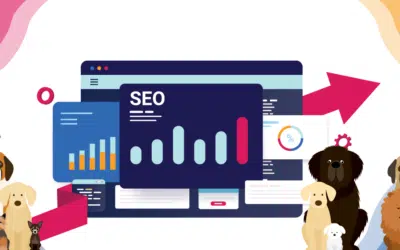Social media, and the world we live in, has changed rapidly in 2020. More people are online than ever before, and 3.8 billion of us are active social media users. This global digital surge is both a challenge and a major business opportunity. Social media now has the biggest audience we have ever seen, and with it, the biggest competition for their attention.
So what does this mean for your social media strategy as we head into 2021? Here are three emerging trends and how to make them work for you:
1. Authentic and Transparent Brand Voices
There’s a lot of noise on the internet, and social media users are trying to filter it. There is a time and place for both paid and organic content, and they should always work together to boost your brand awareness. With the ever-increasing presence of paid advertising on our newsfeeds, organic content needs to evolve past the empty, promotional posts many brands once relied on.
Today, people are turning to social media for both awareness and connectedness. Brands can build authenticity by establishing a consistent and transparent brand voice. Ask yourself the following questions while defining your strategy:
- What are your brand’s values?
- Are we conveying these values with every interaction?
- Is the content we’re posting relatable to our audience and empathetic to real-world situations?
Tip: Identify and speak to a specific target audience. It’s much easier to be authentic when you mean it!
Choose your social platforms wisely. Forty-five percent of consumers will unfollow a brand that publishes irrelevant content. Don’t try to be everything to everyone. For example, 61% of LinkedIn users fall between the age range of 25 and 34 and 4 out of 5 people are decision makers in business—this provides a phenomenal B2B landscape but may not be relevant for say a B2C brand targeting retirees.
Check out the infographic below to see the latest statistics on each social media platform:
2. Community Building and Social Listening
More than ever, people want a sense of community within social media. Establishing this type of relationship with your audience is a win-win. The audience provides direct feedback that brands can use to perfect their offering, improve lead generation, and create a better customer experience.
Three community building practices predicted to make a significant impact in 2021:
- Social Listening
Marketers are rethinking what social media success looks like. Short-term vanity metrics (likes and views) are stepping aside to make room for brand sentiment. Beyond getting someone to view your content, the priority is now listening to what they have to say about it.
- Nano-influencers
Influencer marketing has always been a huge part of community building. We’ve gone from mega influencers to micro-influencers, and now… the nano-influencer. Nano-influencers are Instagram users with less than 10,000 followers. B2B brands have their own built-in network of nano-influencers—their employees! Fun fact: employees are 14x more likely to share content from their employer over any other type of LinkedIn content.
What nano-influences lack in followers, they make up for with higher, more genuine engagement. They’re well-integrated within their own communities and carry a high trust level with their followers because of it.
- User-Generated Content
It’s 2020, social media is growing exponentially, but do you want to know our secret? Word of mouth is still the most effective way to market. Let your audience do the talking! Encourage an authentic conversation by resharing their comments, reviews, and imagery (with their permission, of course).
3. High Quality, Interactive Video Content
As audiences become increasingly oversaturated with content, the way to stand out from the crowd is with high quality, useful content.
Millennials make up one third of B2B buyers, and that number will only continue to grow in the future. Video is still the most reshared and engaging type of content available amongst this crowd. B2B purchasers are spending a lot of money on potential vendors, and they want to make the right decision quickly.
Customer testimonial videos specifically will be an important asset for B2B strategies. Testimonials are a form of social proof that validates the product in the customer’s own words. It provides authority and authenticity in less time than a sales pitch.
With the rising success of platforms such as YouTube and TikTok, other social media platforms are rolling out their own video content features. LinkedIn has launched a Stories feature, something for B2B marketers to cheer about. Businesses can use this for product launches and corporate Q&A’s, all in real time.
Video adds another layer of dimension to your content strategy and, if done right, can feel more engaging than imagery. For example, brands can humanize the team behind a product/service by taking the audience behind the scenes. Live streaming provides an opportunity to connect with your audience in real-time.
If this year has taught us anything, it’s that social media has the power to connect. Content strategies in 2021 will start to look a little more holistic and adaptable. There will be a large focus on social listening and curating quality, personalized, and meaningful engagement within the digital space.
Interested in discussing which social media strategy is right for you? Please get in touch with us!




